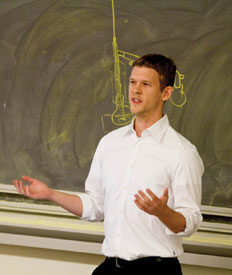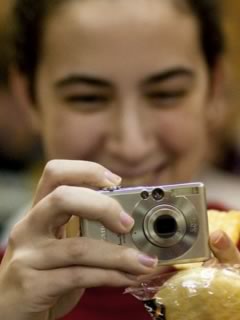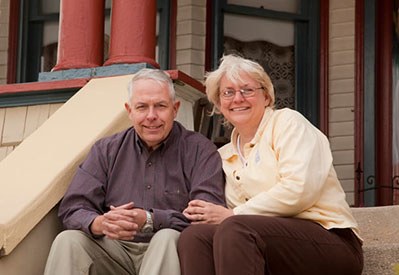
When William Moncrief ’68 and his wife Nancy announced their plans to open a bed and breakfast at the Jersey Shore, no one was particularly shocked. Sure, it was a big change from their 9-to-5 careers in Washington, DC, but Bill’s family and friends already knew he was a man of many talents: Navy pilot, technology management expert—why not add innkeeper to the list?
His kids began buying him books on the B&B business as Christmas and birthday gifts, and before long, the Moncriefs had traded in the “rat race” (Bill’s words) of DC for the serenity of a North Wildwood, NJ, inn. And they’ve done so with great success; earlier this year, Bill and Nancy were named Innkeepers of the Year by Select Registry Distinguished Inns of North America.
While Bill says running the Candlelight Inn isn’t all glamour and glitz—he spends plenty of time unclogging toilets, replacing air conditioners, and servicing hot-water heaters—he also has some remarkable stories from over the last 12 years.
One of his favorites involves a couple who mentioned during check-in that their minister had made the reservation for them. The wife had suffered several consecutive miscarriages, and they’d been going to counseling to try lift the resulting cloud of depression. Bill offered up some extra TLC, and “sure enough,” he says, “nine months later, we got a letter with a photo of a baby that had been conceived while they were here.”
Back in the late 1960s, long before his career as an innkeeper began, Bill was on a very different path. A science major at TCNJ, he had signed a contract to teach in Hammonton, NJ, after graduation. Then, in January 1968, “my friendly neighborhood draft board told me that I wouldn’t be teaching—I would be in the Army,” he says.“The morning I graduated from college, I enlisted in the Navy, and a few days later, I got my draft notice. I’d beaten it by just three days.”
While Bill says he wasn’t sure he’d even make it through flight training, “the next thing I knew, I was flying planes for the Navy. I liked it, so I ended up staying for 20 years.” In that time, he was deployed a handful of times—to Bermuda, Sicily, Iceland, Scotland, and Latin America. “They were paying me to go see all these places,” he says. “It was pretty incredible.”
During those 20 years, he also spent time teaching at the U.S. Naval Academy and earned a master’s degree in computer science at the Naval Postgraduate School. After Moncrief retired from the Navy in 1988, a contact from his military days called to see if he’d be interested in becoming network director at the Bicentennial Commission in Washington, D.C. And that’s how William Moncrief—a teacher-in-training turned naval officer turned technology expert—went to work for former Chief Justice Warren Burger.
“He was a very smart individual and a great listener,” Bill recalls of working under Burger. “He was different from any manager I’d ever had. We could be in an hour-and-a-half meeting, and he might say 20 words at the most.”
After a year with the commission, Bill went on to work at Georgetown University, an international law firm, and the Center for Science in the Public Interest. Along the way, he and his wife often traveled to California wine country, staying in—you guessed it—bed and breakfasts. After talking to a newly minted pair of innkeepers on one of their trips, owning a B&B started to sound more and more enticing to Bill and Nancy. In 1985, the Moncriefs purchased the Candlelight Inn, and have been living out their dream ever since.
Bill says his workdays couldn’t be more different from the ones he spent in the corporate world. “I didn’t have too many people calling me to say, ‘Thanks, my computer’s working well,’” he says. “They talked to me if there was a problem, and they usually didn’t talk nicely. Here [at the inn], people really appreciate what you do for them. They say, ‘Thank you’ all the time.”



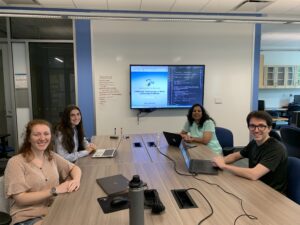

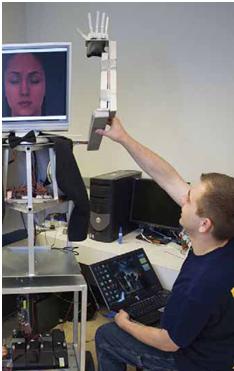 Andrea Salgian, assistant professor of computer science; Teresa Nakra, assistant professor of music; Christopher Ault, assistant professor of interactive multimedia; and Jennifer Wang, associate professor of mechanical engineering, collaborated on the proposal, called “RUI: Giving the Maestro a Human Heart—Fostering Creativity in a Multi-Disciplinary Undergraduate Environment.”
Andrea Salgian, assistant professor of computer science; Teresa Nakra, assistant professor of music; Christopher Ault, assistant professor of interactive multimedia; and Jennifer Wang, associate professor of mechanical engineering, collaborated on the proposal, called “RUI: Giving the Maestro a Human Heart—Fostering Creativity in a Multi-Disciplinary Undergraduate Environment.”
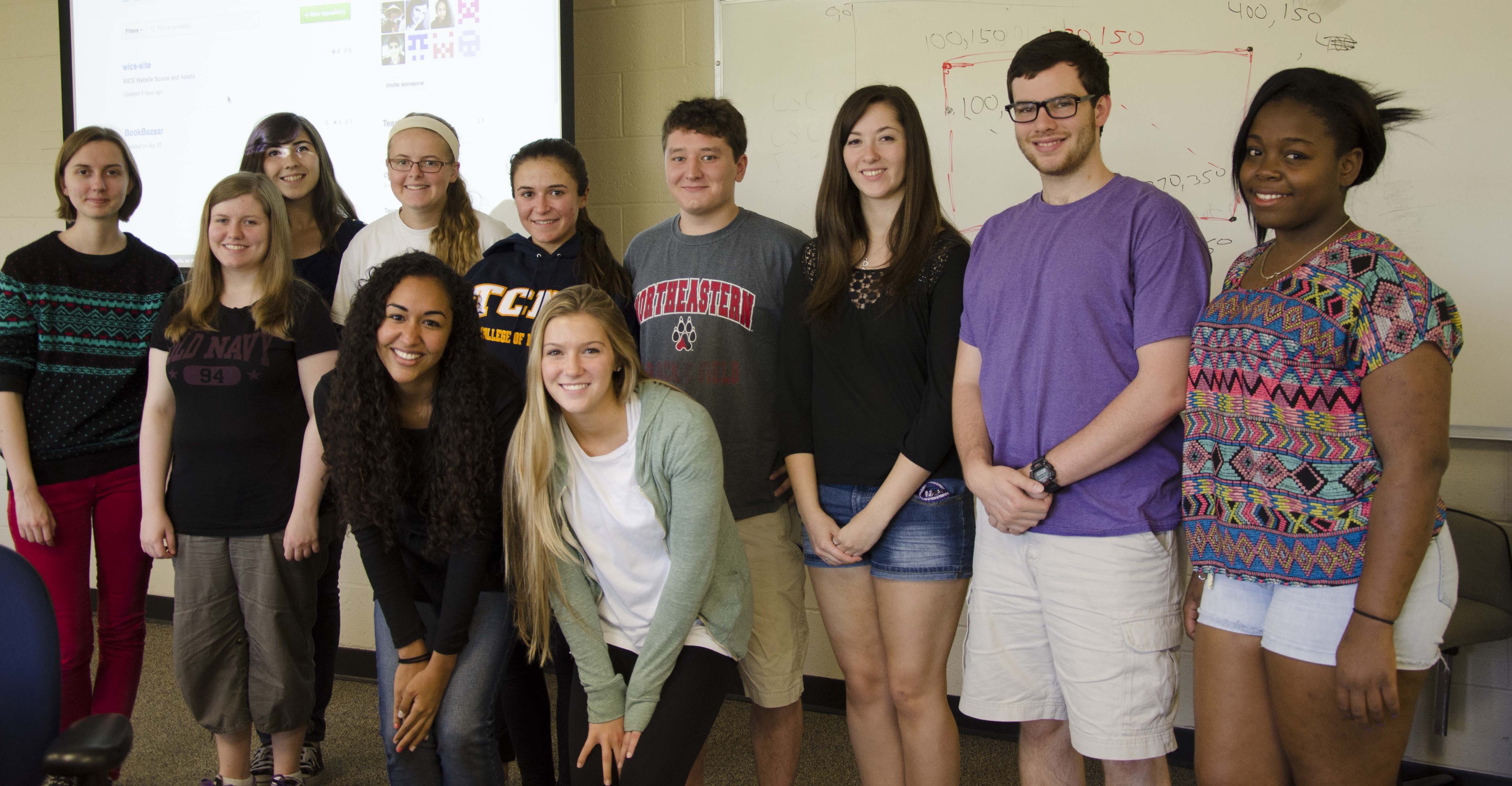 the Women in Computing and Science (WICS) club has aimed to increase that number by raising awareness of sexism in the workplace and encouraging young women to realize that both men and women can be successful in computer science.
the Women in Computing and Science (WICS) club has aimed to increase that number by raising awareness of sexism in the workplace and encouraging young women to realize that both men and women can be successful in computer science.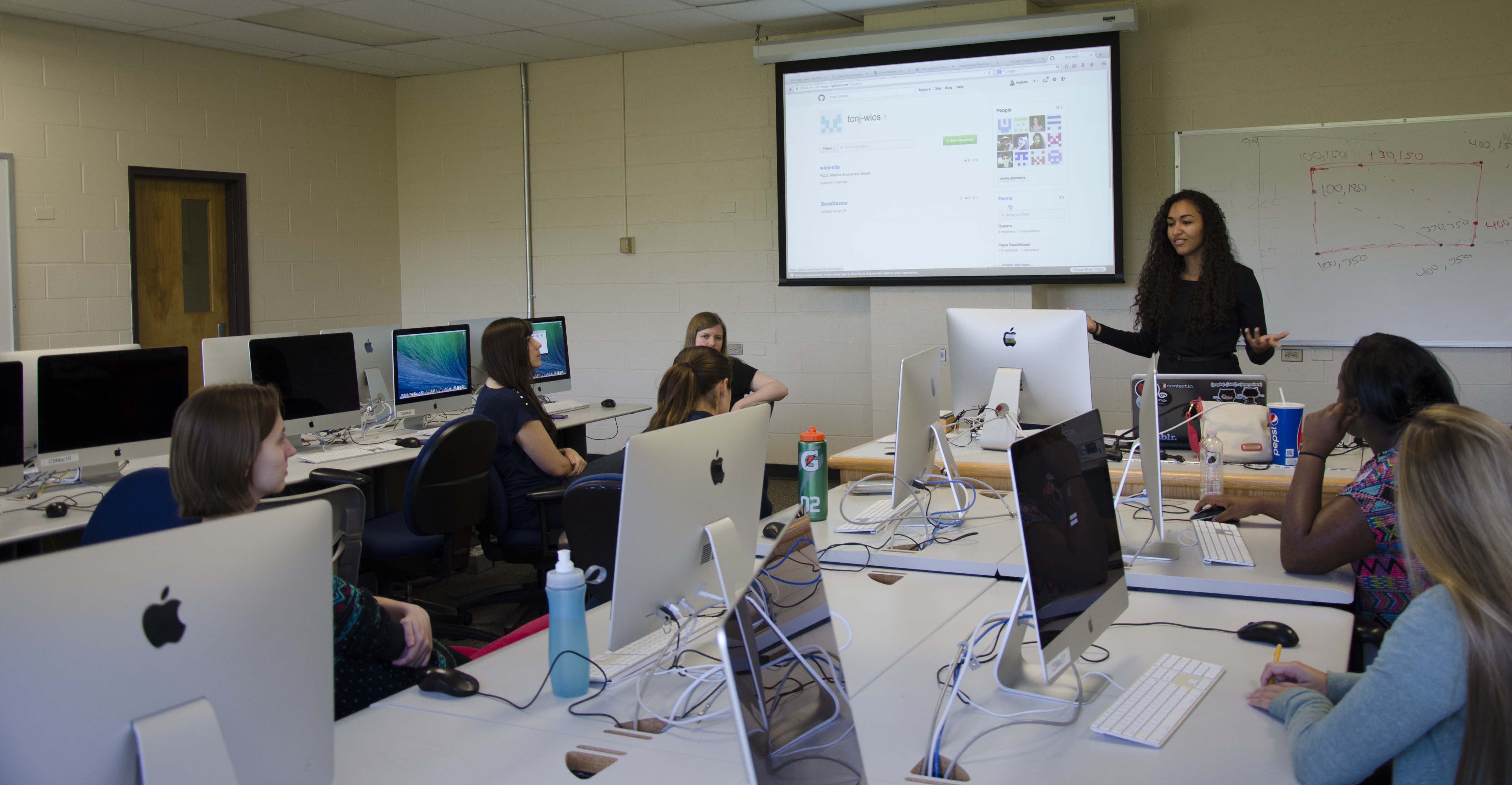 The all-inclusive club sparked the interest of junior computer science and interactive multimedia major Kevin Bohinski because he was able to hear how everyone had different challenges within the major. In February 2016, the club hosted TCNJ Hackathon, an event that challenges students to turn an idea into a workable app within 24 hours, and according to Bohinski, 25% of the participants who signed up were women. While he wishes to see that number increase at future events, he knows that the only way that will occur is if men and women in the department support one another. He believes that, “It’s the male’s role to not do anything that’s oppressive and to make sure that everyone feels included.”
The all-inclusive club sparked the interest of junior computer science and interactive multimedia major Kevin Bohinski because he was able to hear how everyone had different challenges within the major. In February 2016, the club hosted TCNJ Hackathon, an event that challenges students to turn an idea into a workable app within 24 hours, and according to Bohinski, 25% of the participants who signed up were women. While he wishes to see that number increase at future events, he knows that the only way that will occur is if men and women in the department support one another. He believes that, “It’s the male’s role to not do anything that’s oppressive and to make sure that everyone feels included.”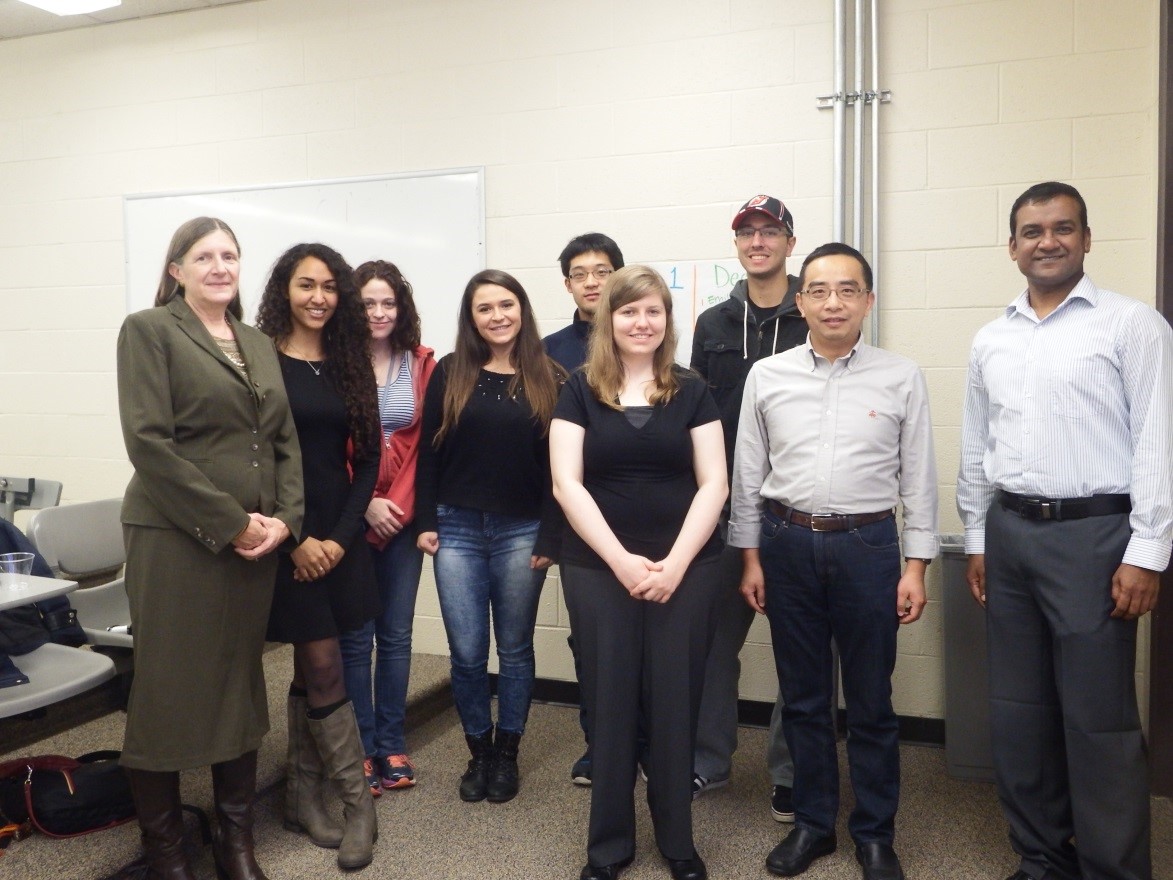 computer technology corporation Oracle. The club recently attended a ‘women in computer science’ event hosted by the Google office in New York that, according to Reedman, resembled a “big playground” where WICS members got to meet more women in the computer science field. She believes that “All these top companies are realizing that they are going to be missing out if they don’t encourage these really smart people from both genders to enter the field.” The club has also implemented a “Lean In Circle” on campus, which, according to leanincircles.org, are “small groups who meet regularly to learn and grow together” and allow women and men “to talk openly about gender issues.”
computer technology corporation Oracle. The club recently attended a ‘women in computer science’ event hosted by the Google office in New York that, according to Reedman, resembled a “big playground” where WICS members got to meet more women in the computer science field. She believes that “All these top companies are realizing that they are going to be missing out if they don’t encourage these really smart people from both genders to enter the field.” The club has also implemented a “Lean In Circle” on campus, which, according to leanincircles.org, are “small groups who meet regularly to learn and grow together” and allow women and men “to talk openly about gender issues.”
 The Association for Computing Machinery (ACM) is a student organization for those interested in computer science. Through different activities, ACM helps its members explore further what they have learned from their classes. Senior and ACM President Brandon Gottlob says, “As a computer science major, there are many different skills to learn and ways to apply and expand upon the concepts from courses. This can take the form of research projects, personal projects, working with different programming languages, and devices to develop on.”
The Association for Computing Machinery (ACM) is a student organization for those interested in computer science. Through different activities, ACM helps its members explore further what they have learned from their classes. Senior and ACM President Brandon Gottlob says, “As a computer science major, there are many different skills to learn and ways to apply and expand upon the concepts from courses. This can take the form of research projects, personal projects, working with different programming languages, and devices to develop on.” The annual Hackathon is an important part of ACM, which this year was held on February 26-28, 2016. Gottlob explains, “The largest event we hold once per year is HackTCNJ, a 24-hour event known as a hackathon where students from schools all over the northeast come to develop their own software applications. At the end of the 24-hour period, students’ projects are judged and prizes are awarded. Because we are funded by sponsor companies, the event is completely free for all participants and food is provided throughout. We estimated that we hosted about 200 college and high school students with a very large majority from colleges in the tri-state area, like Rutgers, Temple, Drexel, Monmouth, Rowan, West Chester, and TCNJ of course. We had over 30 project submissions as well. It was by far our biggest HackTCNJ to date.”
The annual Hackathon is an important part of ACM, which this year was held on February 26-28, 2016. Gottlob explains, “The largest event we hold once per year is HackTCNJ, a 24-hour event known as a hackathon where students from schools all over the northeast come to develop their own software applications. At the end of the 24-hour period, students’ projects are judged and prizes are awarded. Because we are funded by sponsor companies, the event is completely free for all participants and food is provided throughout. We estimated that we hosted about 200 college and high school students with a very large majority from colleges in the tri-state area, like Rutgers, Temple, Drexel, Monmouth, Rowan, West Chester, and TCNJ of course. We had over 30 project submissions as well. It was by far our biggest HackTCNJ to date.” As a whole, ACM reflects the important values within TCNJ’s computer science department. As Brown says, “Everyone within the department is really friendly.” Shen adds, “Everyone is super nice and really fun to be around.” Gottlob concurs. “All of the CS professors are very approachable and encourage all students to participate. I try to cultivate the same attitude in ACM by establishing an open environment where the ideas and participation of any member is highly valued, no matter his/her level of experience.”
As a whole, ACM reflects the important values within TCNJ’s computer science department. As Brown says, “Everyone within the department is really friendly.” Shen adds, “Everyone is super nice and really fun to be around.” Gottlob concurs. “All of the CS professors are very approachable and encourage all students to participate. I try to cultivate the same attitude in ACM by establishing an open environment where the ideas and participation of any member is highly valued, no matter his/her level of experience.”
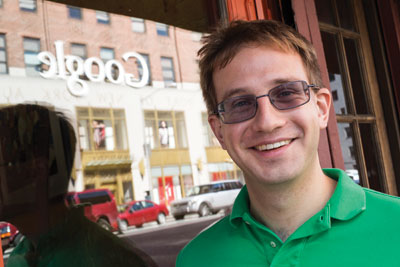 One of the people making this new way of collaboration possible is 2008 computer science graduate Jake Voytko.
One of the people making this new way of collaboration possible is 2008 computer science graduate Jake Voytko.


